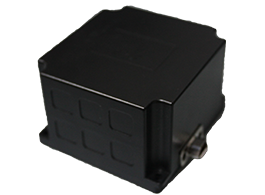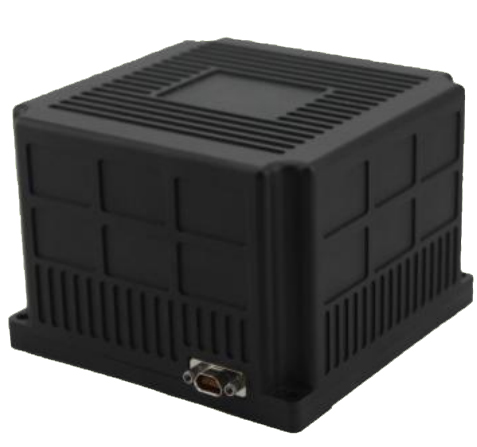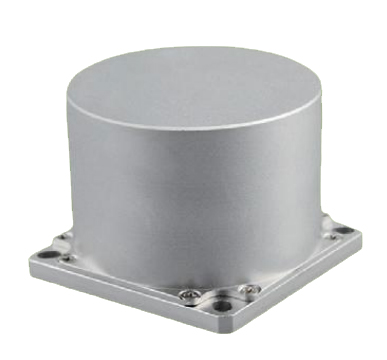An inertial sensor is a type of electronic device that measures and tracks the motion, orientation, and position of an object by leveraging the physical principles of inertia (Newton’s laws of motion). Unlike sensors that rely on external references (e.g., GPS, cameras), inertial sensors are self-contained—they derive data from the object’s own movement, making them critical for applications where external signals may be unavailable (e.g., indoor environments, underground, or space).
Core Components of Inertial Sensors
Inertial sensors are rarely standalone; they typically combine three key sub-sensors to capture full 3D motion. The most common integration is an Inertial Measurement Unit (IMU), which packages these components:
Sensor Type | What It Measures | Key Principle | Example Use Case |
Accelerometer | Linear acceleration (e.g., forward/back, up/down) and gravity | Newton’s 2nd Law (F=ma): A tiny "proof mass" inside the sensor resists acceleration, and the force of this resistance is measured to calculate acceleration. | Phone screen rotation (tilt detection), step counting in wearables. |
Gyroscope | Angular velocity (rotation around X/Y/Z axes, e.g., twisting, spinning) | Conservation of angular momentum: A vibrating element (in MEMS gyroscopes) experiences a "Coriolis force" when rotated, which is measured to calculate rotation speed. | Drone stabilization (preventing unwanted spinning), steering angle in cars. |
Magnetometer | Magnetic field strength (to determine direction relative to Earth’s magnetic poles) | Hall effect or magnetoresistance: Detects changes in magnetic flux to align with Earth’s magnetic field (like a digital compass). | Smartphone compass apps, robot navigation (heading detection). |
We BWSENSING’s products all based on higher than industrial-grade inertial sensor.
Key Types of Inertial Sensors
The term "inertial sensor" encompasses different configurations based on the components included:
6-axis IMU: Combines a 3-axis accelerometer + 3-axis gyroscope (most common in consumer devices).

9-axis IMU: Adds a 3-axis magnetometer to a 6-axis IMU (provides full motion + direction data).

Inertial Navigation System (INS): A more advanced system that uses IMU data plus algorithms to calculate position over time (e.g., integrating acceleration to get velocity, then integrating velocity to get position). INS is used in aircraft, ships, and missiles where high precision is critical.

How Inertial Sensors Work (Simplified)
Most modern inertial sensors use MEMS (Micro-Electro-Mechanical Systems) technology—miniature mechanical structures etched onto a silicon chip. Here’s a high-level breakdown for MEMS-based sensors:
Sensing Element: A tiny, movable structure (e.g., the "proof mass" in an accelerometer or vibrating beam in a gyroscope) is embedded in the chip.
Motion Detection: When the sensor (and the object it’s attached to) moves, the sensing element resists or responds to the motion (via inertia or Coriolis forces).
Signal Conversion: The mechanical motion of the sensing element is converted into an electrical signal (e.g., voltage changes) using electrodes or piezoresistors.
Data Processing: The sensor’s circuitry amplifies and filters the electrical signal, then converts it into digital data (e.g., m/s² for acceleration, rad/s for angular velocity) that a device (e.g., phone, drone) can use.
Common Applications
Inertial sensors are ubiquitous across industries due to their small size, low cost (for MEMS versions), and independence from external signals. Key use cases include:
1. Consumer Electronics
Smartphones/Tablets: Screen rotation, gaming (motion controls like tilting to steer in racing games), and camera stabilization.
Wearables: Step counting (accelerometer), sleep tracking (motion detection), and fitness metrics (e.g., running pace).
VR/AR Headsets: Tracking head movement to sync virtual environments with the user’s position.
2. Automotive
Advanced Driver Assistance Systems (ADAS): ESC (Electronic Stability Control) uses gyroscopes to detect skidding; airbags use accelerometers to trigger deployment during collisions.
Autonomous Vehicles: IMUs complement GPS to maintain navigation when GPS signals are blocked (e.g., in tunnels).
3. Aerospace & Defense
Aircraft/Helicopters: INS provides position and orientation data for navigation, even when GPS is jammed.
Satellites/Rockets: Gyroscopes stabilize orientation in space (e.g., keeping a satellite pointed at Earth).
Missiles/Drones: Precision guidance during flight.
4. Robotics & Industrial
Robots: IMUs help maintain balance (e.g., humanoid robots) and navigate indoor spaces (where GPS fails).
Industrial Machinery: Vibration monitoring (using accelerometers) to detect equipment wear or malfunctions.
Limitations of Inertial Sensors
While powerful, inertial sensors have inherent drawbacks that often require pairing with other technologies (called sensor fusion):
Drift: Over time, small measurement errors accumulate (especially in gyroscopes), leading to "drift" (e.g., a drone’s IMU may incorrectly calculate its position after minutes of flight).
Noise: Electrical or mechanical interference can distort data (e.g., a wearable’s accelerometer picking up vibration from a washing machine).
Gravity Confusion: Accelerometers measure both motion acceleration and gravity. Special algorithms are needed to separate the two (e.g., distinguishing between tilting a phone and moving it forward).
To overcome these, inertial sensors are often combined with GPS, cameras (visual odometry), or barometers (for altitude) in a process called sensor fusion (e.g., a smartphone using GPS + IMU to track location when GPS is weak). Such as BWSENSING GI series
Summary
At its core, an inertial sensor is a self-contained device that measures motion (acceleration, rotation) and orientation using inertia. By combining accelerometers, gyroscopes, and magnetometers into IMUs, these sensors enable precise motion tracking in everything from smartphones to spacecraft—even when external references (like GPS) are unavailable. Their main challenges (drift, noise) are addressed via sensor fusion, making them indispensable in modern technology.

 +86 189 2129 2620
+86 189 2129 2620
+86 176 0611 8008 sales@bwsensing.com
sales@bwsensing.com














